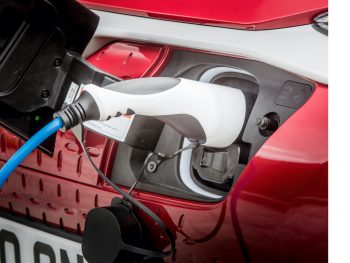EV age coming fast but not fast enough, says Boston Consulting Group report
The switch from ICE age to EV age will take place quicker than previous predictions but needs to happen faster to tackle climate change.

By 2026 the share of electrified (fully electric and hybrid) vehicles will account for more than half of light vehicles sold globally, according to BCG’s new report
That’s the finding of a new report from the Boston Consulting Group exploring the roadmap towards electrification, what policy makers can do to speed the transition and how the shift is set to impact the industry.
According to the research, by 2026 the share of electrified (fully electric and hybrid) vehicles will account for more than half of light vehicles sold globally – four years sooner than predicted by BCG in its previous report.
The firm’s eco experts say that the transition – especially to all-electric vehicles – will occur more quickly in the EU and China than other major markets, while electrification may occur relatively slowly in large developing nations such as Brazil and India.
But while the transition from the ICE age to the EV age over the coming decade will represent rapid change in most countries, from an environmental perspective, the so-called EV age isn’t coming fast enough, and steering the fight against climate change back on course will require most markets to speed up the EV transition even further.
BCG’s modelling predicts that the automotive sector in most major markets, including the EU with its European Green Deal, will likely fall well short of Paris Agreement targets for cutting worldwide emissions.
For the EU to achieve its Green Deal targets, for example, it would need to reduce light-vehicle emissions by 90% by 2043 – seven years sooner than currently forecasted – to compensate for its car parc emissions.
BCG’s analysis finds that one way the EU automotive sector can achieve its emissions goals is to halt new ICE sales even faster and sell only zero-emission light vehicles by 2030.
It also calls on governments around the world to enhance their existing regulations and incentives, adding that emission standards and consumer financial incentives will have to be strengthened to encourage faster adoption of zero-emission vehicles.
And as policymakers promote EV adoption, the must also act to ensure that existing gas- and diesel-burning vehicles are removed from their roads more quickly—following the example of New Delhi, for instance, which has banned diesel vehicles that are more than 10 years old.
Other elements must come together to speed the transition to EVs; including tackling the current, inadequate charging infrastructure, which remains a key deterrent or picking EVs over ICE vehicles. BCA estimates that 100 million additional charge points will be required globally in the next decade to keep pace with projected EV growth.
The EV supply chain will also need to deliver. Production of battery cells and their key materials, such as lithium and nickel, will need to increase tenfold by 2030.
OEMs will also need to address a “tectonic shift” in business models and the report also says the role of dealers in the EV transition cannot be underestimated; they will have to collaborate more closely with OEMs.
The reports’ authors conclude: “The electrification of the global automotive market has made significant progress over the past decade, at a speed which has surpassed even the most bullish forecasts. Still, to achieve the overarching objective of mitigating climate change, policymakers and the automotive industry not only must accelerate the market penetration of EVs. They must also move faster to undo the damage being done by getting older gasoline- and diesel-powered vehicles off the roads more quickly. The stakes couldn’t be higher – not just for automakers, but for the planet itself.”
To access the Boston Consulting Group report on EV penetration, click here.







